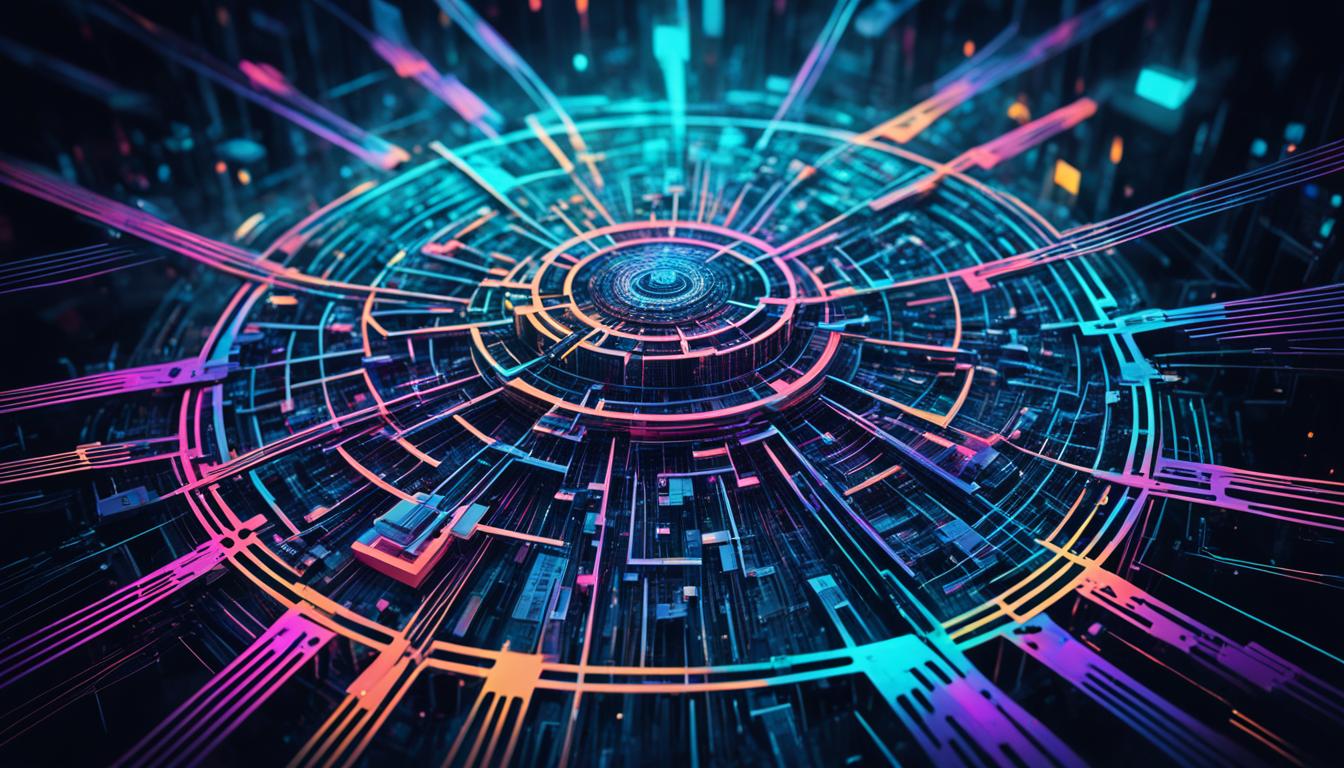
The prospect of a quantum internet by 2025 could revolutionize cryptography, computing power, and secure communications with unbreakable encryption via quantum mechanics. Quantum computers pose an existential threat to current internet security by being able to quickly crack the algorithms used to encrypt most online data. Transitioning to quantum-safe platforms and quantum key distribution (QKD) is crucial to protect against the “harvest now, decrypt later” approach of hackers waiting for quantum computers powerful enough to break classical encryption. QKD uses the quantum properties of photons to securely distribute encryption keys, ensuring data remains unbreakable in transit. Commercial QKD networks are already emerging, but building a truly global quantum internet faces significant technical and infrastructure challenges.
Key Takeaways:
- The prospect of a quantum internet by 2025 could revolutionize cryptography, computing power, and secure communications.
- Quantum computers pose an existential threat to current internet security by being able to quickly crack classical encryption algorithms.
- Transitioning to quantum-safe platforms and quantum key distribution (QKD) is crucial to protect against the “harvest now, decrypt later” approach of hackers.
- QKD uses the quantum properties of photons to securely distribute encryption keys, ensuring data remains unbreakable in transit.
- Building a truly global quantum internet faces significant technical and infrastructure challenges.
Quantum Computing’s Existential Threat to Internet Security
Quantum computers pose a serious threat to current internet security by being able to quickly factor large numbers, the foundation of most classical encryption algorithms like RSA. The new algorithm published by researchers in China claims that only 372 qubits, well within reach of IBM’s 433-qubit Osprey quantum processor, would be needed to break the standard 2048-bit RSA encryption. This means hackers could simply store encrypted data now and wait for powerful enough quantum computers to come along and decrypt it later, known as the “harvest now, decrypt later” approach.
Quantum Computers and the Vulnerability of Classical Encryption
The UK’s National Cyber Security Centre has warned that large organizations should prioritize transitioning to quantum-safe platforms to protect against the threat of quantum computer attacks. IBM has also stated that quantum computing poses an “existential threat” to classical data security, emphasizing the urgency of action. Post-quantum cryptography protocols that don’t rely on number factorization are being developed, but their security still depends on assumptions about the practical limits of quantum computers.
The Urgency of Transitioning to Quantum-Safe Platforms
Quantum key distribution (QKD) is the only method proven to provide unconditional security, making the shift from classical encryption like AES+RSA to AES+QKD a critical priority. This transition is crucial to protect against the “harvest now, decrypt later” approach of hackers waiting for quantum computers powerful enough to break classical encryption.
Quantum Key Distribution: The Foundation of Quantum Internet
Quantum key distribution (QKD) uses the quantum properties of photons to distribute encryption keys in a way that guarantees security. In the BB84 QKD protocol, the polarization states of individual photons encode the key, and any attempt to intercept or measure the photons would be detected, alerting the communicating parties. This ensures the key remains completely secure during transmission, providing unbreakable encryption of the data.
Commercial QKD Networks and the Emerging Global Quantum Web
Commercial QKD networks are quickly emerging, with BT and Toshiba developing a 30km network in the UK used by accounting firm EY. National-scale QKD networks are likely to emerge within a few years, and eventually a global “quantum internet” will connect quantum and classical computers through quantum-secured communication channels. This quantum web will allow anyone to share sensitive data without fear of it being hacked, revolutionizing secure communications.
Challenges in Building a Truly Global Quantum Internet
While the progress towards a quantum internet is promising, significant technical and infrastructure challenges remain. Quantum communication protocols like QKD are limited in distance, requiring repeater nodes to extend the network. Building out the necessary fiber-optic and satellite infrastructure for a global quantum internet will require massive investments and coordination between nations. Additionally, scaling quantum computing hardware to the level needed for a quantum internet, with thousands of high-fidelity qubits, remains an elusive goal that will take time to achieve.

What are the prospects for quantum internet by 2025?
Experts believe a practical quantum internet could be a decade or more away, with the first national-scale quantum key distribution (QKD) networks likely to emerge within the next few years. However, the timeline remains uncertain, as significant technical hurdles around scaling quantum hardware and building the required infrastructure must still be overcome. The rate of progress in quantum technologies will be a key factor in determining if a quantum internet by 2025 is achievable.
Projected Timeline for Quantum Internet Development
While the prospect of a quantum internet by 2025 is an ambitious goal, experts caution that the timeline for its realization remains uncertain. Significant technical challenges, such as scaling quantum computing hardware and establishing the necessary fiber-optic and satellite infrastructure, must be overcome before a global quantum internet can become a reality. The speed at which these advancements in quantum technology occur will be a critical determinant in the quantum internet’s timeline.
Potential Applications and Benefits of a Quantum Internet
A quantum internet could revolutionize a wide range of industries and fields, from cybersecurity and financial modeling to drug discovery and logistics optimization. The ability to transmit data with unconditional security through quantum key distribution would protect against the threat of quantum computer-based hacking. The massive computing power of quantum networks could also enable breakthroughs in areas like artificial intelligence, financial risk modeling, and supply chain optimization. Overall, a quantum internet promises to unlock new frontiers in secure, high-performance computing and communication.
Conclusion
The prospect of a quantum internet by 2025 holds immense promise, yet significant technical and infrastructure challenges remain. Quantum computers pose an existential threat to current internet security, making the urgent transition to quantum-safe encryption platforms and quantum key distribution (QKD) networks a critical priority. While commercial QKD networks are already emerging, building a truly global quantum internet capable of unlocking the transformative benefits of quantum technology will require substantial time and investment.
The timeline for this quantum leap forward remains uncertain, as the pace of progress in quantum technologies will be a key factor. However, the potential impact of a quantum internet on fields ranging from cybersecurity to scientific discovery makes it a future worth pursuing. With unwavering commitment and strategic coordination, the vision of a quantum internet that provides unbreakable encryption and unprecedented computing power could become a reality sooner than expected.
As the world increasingly relies on the internet for sensitive communications and critical operations, the need for quantum-secure platforms has never been more pressing. By embracing the promise of quantum internet, you and your organization can stay ahead of the curve, safeguarding your data and unlocking new frontiers in secure, high-performance computing and communication.
FAQ
What are the prospects for quantum internet by 2025?
The prospect of a quantum internet by 2025 could revolutionize cryptography, computing power, and secure communications with unbreakable encryption via quantum mechanics. While significant technical and infrastructure challenges remain, the progress towards a quantum internet is promising, with commercial quantum key distribution (QKD) networks already emerging and national-scale QKD networks likely to emerge within a few years.
How do quantum computers pose an existential threat to current internet security?
Quantum computers pose a serious threat to current internet security by being able to quickly factor large numbers, the foundation of most classical encryption algorithms like RSA. This means hackers could simply store encrypted data now and wait for powerful enough quantum computers to come along and decrypt it later, known as the “harvest now, decrypt later” approach.
Why is it urgent to transition to quantum-safe platforms?
The UK’s National Cyber Security Centre has warned that large organizations should prioritize transitioning to quantum-safe platforms to protect against the threat of quantum computer attacks. IBM has also stated that quantum computing poses an “existential threat” to classical data security, emphasizing the urgency of action.
How does quantum key distribution ensure unbreakable encryption?
Quantum key distribution (QKD) uses the quantum properties of photons to distribute encryption keys in a way that guarantees security. In the BB84 QKD protocol, the polarization states of individual photons encode the key, and any attempt to intercept or measure the photons would be detected, alerting the communicating parties.
What is the progress towards a global quantum internet?
Commercial QKD networks are quickly emerging, with BT and Toshiba developing a 30km network in the UK used by accounting firm EY. National-scale QKD networks are likely to emerge within a few years, and eventually a global “quantum internet” will connect quantum and classical computers through quantum-secured communication channels.
What are the challenges in building a truly global quantum internet?
Significant technical and infrastructure challenges remain, such as the limited distance of quantum communication protocols like QKD, requiring repeater nodes to extend the network. Building out the necessary fiber-optic and satellite infrastructure for a global quantum internet will require massive investments and coordination between nations.
When can we expect a practical quantum internet?
Experts believe a practical quantum internet could be a decade or more away, with the first national-scale QKD networks likely to emerge within the next few years. However, the timeline remains uncertain, as significant technical hurdles around scaling quantum hardware and building the required infrastructure must still be overcome.
What are the potential applications and benefits of a quantum internet?
A quantum internet could revolutionize fields ranging from cybersecurity and financial modeling to drug discovery and logistics optimization. The ability to transmit data with unconditional security through quantum key distribution would protect against the threat of quantum computer-based hacking. The massive computing power of quantum networks could also enable breakthroughs in areas like artificial intelligence, financial risk modeling, and supply chain optimization.
